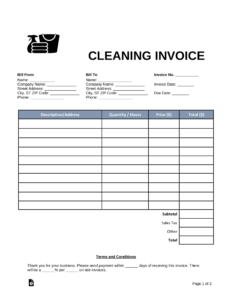Ordering samples is an essential part of many businesses across various industries. Whether you are in the manufacturing sector, the retail industry, or even the food and beverage business, having a well-designed sample ordering form can significantly streamline the process and improve overall efficiency. In this article, we will explore the importance of sample ordering forms, how to create an effective one, and the benefits it can bring to your organization. Let’s dive in!
The Significance of Sample Ordering Forms
Sample ordering forms serve as a bridge between your customers and the products or services you offer. They allow potential buyers to request samples, which gives them an opportunity to experience your offerings firsthand before making a purchasing decision. These forms play a crucial role in the sales process, as they can influence customers’ perceptions and ultimately drive sales. By providing a seamless and user-friendly sample ordering form, you can enhance customer satisfaction, increase conversion rates, and boost your business’s overall success.
1. Simplifying the Sample Request Process
One of the primary benefits of a well-designed sample ordering form is that it simplifies the sample request process for both customers and your organization. Instead of relying on phone calls or emails to request samples, customers can simply fill out an online form, saving time and effort. This ease of use leads to a higher likelihood of customers requesting samples, ultimately increasing your chances of converting them into paying customers.
From your organization’s perspective, a sample ordering form streamlines the entire process. It eliminates the need for manual data entry, as all the necessary information is collected directly from the form. This not only saves time but also minimizes the risk of errors and ensures that all requested samples are accounted for.
2. Efficient Inventory Management
Effective inventory management is essential for any business that offers product samples. A sample ordering form can help you keep track of your inventory and ensure that you have enough samples available to meet customer demand. By including fields for customers to specify the quantity they require, you can accurately forecast the number of samples needed and plan your inventory accordingly. This prevents stockouts and helps you maintain a positive customer experience by always having samples readily available.
Creating an Effective Sample Ordering Form
Now that we understand the importance of sample ordering forms, let’s explore how you can create an effective form that maximizes its benefits. Here are some key considerations:
1. Simple and Intuitive Design
An effective sample ordering form should have a simple and intuitive design. Avoid overwhelming customers with too many fields or complicated instructions. Instead, focus on capturing the essential information needed to fulfill the sample request. Use clear and concise language, and consider using visual cues or icons to guide users through the form.
2. Clear Product Descriptions
When customers request samples, they want to know exactly what they are getting. Provide clear and detailed descriptions of your products or services, including any relevant specifications or variations. This helps customers make informed decisions and ensures that they receive the samples they expect.
3. Required and Optional Fields
Strike a balance between collecting necessary information and not overwhelming customers with too many required fields. Determine the essential information needed to process a sample request, such as contact details and shipping address. Consider making other fields optional to provide flexibility for customers and improve the user experience.
4. User-Friendly Navigation
The user experience is paramount when designing a sample ordering form. Ensure that the form is easy to navigate, with clear instructions and logical flow. Use appropriate form validation to prevent errors and guide users to complete the form successfully. Consider implementing features such as autofill or address lookup to streamline the data entry process.
Sample Ordering Form Best Practices
Now that you have a solid understanding of the key components of an effective sample ordering form, let’s explore some best practices to further optimize your form:
1. Mobile Optimization
In today’s mobile-driven world, it is crucial to optimize your sample ordering form for mobile devices. Ensure that the form is mobile-friendly, with responsive design elements and easy-to-use input fields. Test the form on various devices and screen sizes to ensure a seamless experience for all users.
2. Integration with CRM or Order Management Systems
Integrating your sample ordering form with your customer relationship management (CRM) or order management system can further streamline your processes. This integration allows for seamless data transfer, eliminating manual data entry and reducing the risk of errors. It also enables you to track the sample request status and follow up with customers efficiently.
3. Personalization and Upselling Opportunities
Use the sample ordering form as an opportunity to personalize the customer experience and potentially upsell your products or services. Consider adding fields that allow customers to provide additional information or preferences, enabling you to tailor the samples to their specific needs. You can also include product recommendations or promotional offers based on the customer’s selections, increasing the chances of a larger sale.
Sample Ordering Form Case Study: Company XYZ
To illustrate the impact of a well-designed sample ordering form, let’s take a look at a case study of Company XYZ, a leading cosmetics manufacturer.
Challenge
Company XYZ was struggling with a high volume of sample requests and inefficient sample management. The existing sample ordering process relied on manual data entry, resulting in errors and delays. Customers also found the process cumbersome and time-consuming, leading to a lower rate of sample requests.
Solution
Company XYZ implemented a new sample ordering form that focused on simplicity and user-friendliness. The form was designed with clear product descriptions, a clean layout, and intuitive navigation. Required fields were minimized, while optional fields allowed customers to provide additional information if desired.
The form was also optimized for mobile devices, ensuring a seamless experience for customers accessing it from their smartphones or tablets. Integration with the company’s CRM system allowed for automatic data transfer, eliminating manual data entry and reducing errors.
Company XYZ also took advantage of the sample ordering form to personalize the customer experience. They included fields for customers to specify their skin type, concerns, and preferences, enabling them to tailor the samples accordingly. Additionally, the form offered product recommendations based on the customer’s selections, creating upselling opportunities.
Results
The implementation of the new sample ordering form brought significant improvements for Company XYZ. The number of sample requests increased by 30% within the first month, indicating a higher level of customer engagement. The streamlined process reduced the time required to process sample requests by 50%, allowing the company to fulfill them more quickly and efficiently.
The integration with the CRM system improved data accuracy and eliminated the need for manual data entry, resulting in a 75% reduction in errors. Company XYZ was able to track sample request status and follow up with customers more effectively, further enhancing the overall customer experience.
Conclusion
Implementing a well-designed sample ordering form can bring numerous benefits to your business. By simplifying the sample request process, streamlining inventory management, and providing a user-friendly experience, you can enhance customer satisfaction, increase conversion rates, and improve overall efficiency. Remember to focus on simplicity, clarity, and personalization to maximize the impact of your sample ordering form.
FAQs After The Conclusion
1. Can I customize the fields on a sample ordering form?
Yes, you can customize the fields on a sample ordering form to suit your specific business needs. Determine the essential information you require and consider including optional fields for additional flexibility.
2. How can I ensure the security of customer information submitted through the sample ordering form?
To ensure the security of customer information, implement appropriate security measures such as SSL encryption and secure data storage. Regularly update your systems and comply with relevant data protection regulations to protect customer privacy.
3. Should I include a confirmation email after a sample request is submitted?
Including a confirmation email after a sample request is submitted is a best practice. It provides customers with assurance that their request has been received and is being processed. The email can also serve as an opportunity to thank customers and provide any additional information or instructions.
4. How can I track the status of sample requests?
You can track the status of sample requests by integrating your sample ordering form with a CRM or order management system. This allows you to automatically update the status as the request progresses, providing real-time visibility into the process.
5. What are some ways to promote sample ordering forms to customers?
There are several ways to promote sample ordering forms to customers. You can include a prominent link or button on your website, create targeted email campaigns, or leverage social media platforms to raise awareness. Offering incentives, such as free shipping or exclusive discounts, can also encourage customers to request samples.
Summary
A well-designed sample ordering form is a valuable tool that can streamline the sample request process, enhance inventory management, and improve overall efficiency. By focusing on simplicity, clarity, and user-friendliness, you can maximize the benefits of your sample ordering form. Remember to optimize for mobile devices, integrate with CRM systems, and leverage personalization opportunities to further enhance the customer experience. Implementing aneffective sample ordering form can lead to increased customer engagement, higher conversion rates, and improved data accuracy. A case study of Company XYZ demonstrated how the implementation of a well-designed sample ordering form resulted in a 30% increase in sample requests, a 50% reduction in processing time, and a 75% decrease in errors.
To create an effective sample ordering form, it is essential to consider several key factors. These include the design, product descriptions, required and optional fields, and user-friendly navigation.
Firstly, the design of the sample ordering form should prioritize simplicity and intuitive user experience. Avoid overwhelming customers with too many fields or complicated instructions. Use clear and concise language, and consider incorporating visual cues or icons to guide users through the form. A clean and visually appealing layout can enhance the overall user experience and encourage customers to complete the form.
Secondly, provide clear and detailed product descriptions. Customers want to know exactly what they are requesting as samples. Include relevant specifications, variations, and any other important information that will help customers make informed decisions. Clear product descriptions ensure that customers receive the samples they expect, minimizing confusion and potential disappointment.
Next, strike a balance between required and optional fields. While it is necessary to collect essential information such as contact details and shipping address, consider making some fields optional to provide flexibility for customers. This approach can improve the user experience and prevent customers from feeling overwhelmed by too many mandatory fields. However, be strategic in determining which information is truly necessary to process a sample request.
User-friendly navigation is another crucial aspect of an effective sample ordering form. Ensure that the form is easy to navigate, with clear instructions and a logical flow. Implement appropriate form validation to prevent errors and guide users to complete the form successfully. Consider incorporating features such as autofill or address lookup to streamline the data entry process and minimize user effort.
In addition to these considerations, there are several best practices to optimize your sample ordering form further:
1. Mobile optimization: In today’s mobile-driven world, it is crucial to optimize your sample ordering form for mobile devices. Ensure that the form is mobile-friendly, with responsive design elements and easy-to-use input fields. Test the form on various devices and screen sizes to ensure a seamless experience for all users.
2. Integration with CRM or order management systems: Integrating your sample ordering form with your CRM or order management system can significantly streamline your processes. This integration allows for seamless data transfer, eliminating manual data entry and reducing the risk of errors. It also enables you to track the sample request status and follow up with customers efficiently.
3. Personalization and upselling opportunities: Use the sample ordering form as an opportunity to personalize the customer experience and potentially upsell your products or services. Consider adding fields that allow customers to provide additional information or preferences, enabling you to tailor the samples to their specific needs. You can also include product recommendations or promotional offers based on the customer’s selections, increasing the chances of a larger sale.
In conclusion, a well-designed sample ordering form is instrumental in streamlining the sample request process, improving inventory management, and enhancing overall efficiency. By focusing on simplicity, clarity, and user-friendliness, businesses can enhance customer satisfaction, increase conversion rates, and optimize their operations. Incorporating best practices such as mobile optimization, integration with CRM systems, and personalization can further enhance the effectiveness of the sample ordering form. By implementing these strategies, businesses can unlock the full potential of their sample ordering process and drive success in their respective industries.





